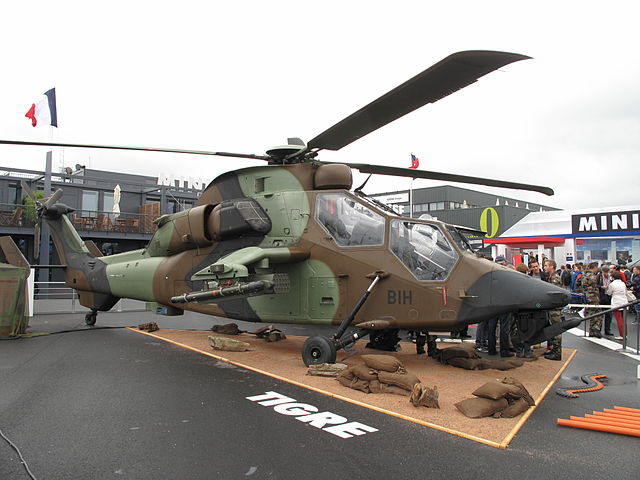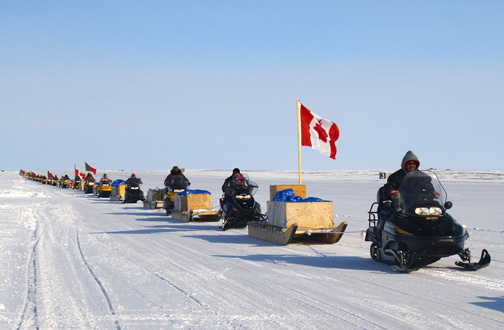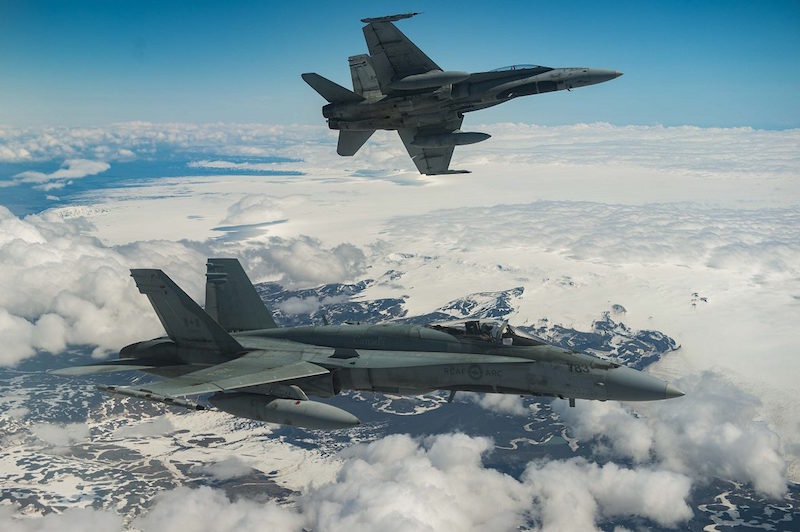The war in Afghanistan highlighted the Canadian Armed Forces’ need for dedicated attack helicopters to provide close air support. Close air support is defined as aerial action that is in support of friendly ground forces against a determined foe.Although the RCAF’s CF-18s are able to conduct close air support operations, they are unable to continuously provide cover even with aerial refuelling. As such, Canadian troops often have relied upon Allied close air support during prolonged engagements, as evident during Operation Medusa.
Learning from Operation Medusa, close air support for the Canadian Army is currently undertaken by the Canadian variant of the Bell UH -1 Huey designated as the CH 146 Griffon, supporting the heavy transport CH-147 Chinook. A recent report from the Senate Standing Committee on National Defence cited a need for Canada to obtain a fleet of attack helicopters in order to protect the Chinook helicopters, given that use of Griffons as attack helicopters is unsustainable.The report recommended 24 replacements, however this figure is perhaps too conservative, and larger numbers should be considered to meet Canada’s realistic needs.
An attack helicopter is defined as a helicopter that has the capability of engaging both ground and air targets with an array of weapons. Modern attack helicopter have two main roles which are to provide direct and accurate close air support for ground troops, and to destroy enemy armoured units. So what attack helicopter options does Canada have?
Potential Options:
The Boeing AH-64 Apache is an American twin-turbo shaft attack helicopter with a tailwheel-type landing gear arrangement and a tandem cockpit for a crew of two. It features a nose-mounted sensor suite for target acquisition and night vision systems. On a cost basis, 24 Boeing AH – 64 A Apache attack helicopters, with a unit cost of around US $ 45 million would total 1.1 billion $; obtaining 44 Apache attack helicopters would total $2 billion; 66 Apache attack helicopters could be procured for approximately US$ 3 billion; and 111 for approximately US$ 5.5 billion. The Apache has been battlefield proven primarily by the US and the UK. Other Apache customers include the Netherlands, Greece, Saudi Arabia, Qatar, Israel, Japan, South Korea, UAE and Kuwait. Despite the Apache being the best attack helicopter currently in NATO’s arsenal, procuring the Apache may prove more expensive given that AH- 64 As would have to be upgraded to AH – 64 D/E variants. The Apache may, however, be an intriguing option if Boeing includes Apaches, at a lower unit cost, along with the F-18 E/F Super Hornet package for Canada.
The A129 Mangusta comes a near second to the Apache in terms of lethality. The Agusta A129 “Mangusta” (“Mongoose”) is a modern Italian-designed and developed, two-seat, twin-engine battlefield helicopter developed specifically as an anti-tank attack helicopter. To date, the combat service of the Mangusta has centered on United Nations initiatives including peacekeeping and support initiatives across Afghanistan, Angola, Iraq, Macedonia and Somalia. On a cost basis, 24 Italian Agusta A129 Mangusta attack helicopters, with a unit cost of around US $22 million would total US$600 million. Similarly, 45 Mangusta attack helicopters could be procured for approximately $1 billion and 90 for approximately $2 billion. The A129 Mangusta may be an ideal attack helicopter for ground support for the Canadian Armed Forces. However, the Italian Army is planning to retire their A129 attack helicopters by 2025. As such, the manufacturer has been contracted by the Italian Army to develop a successor to the Mangusta with advanced capabilities. This successor at the moment is still in the research and development phase, designated as the AW 249. As with most upgrades, a potential unit cost increase of 10-15% can be anticipated, taking cost to around US$ 25 million apiece.
It is often noted that the AH-1 Cobra family inspired the development of the AH-64 Apache. While Apaches have presence the world over, few countries have helicopters belonging to the AH-1 Cobra family. The Bell Textron’s AH-1Z Viper is a four bladed attack helicopter based on the AH-1 Super Cobra, developed during the Vietnam War. The AH-1Z Viper is currently in service with the US Marine Corps, and 15 have been ordered by the Pakistan Army, even if delivery is delayed due to US concerns that Pakistan is not doing enough against terrorism. On a cost basis, 24 Vipers, with a unit cost of around 31 million $ US, would total around $750 million US; 32 Vipers could be procured for US$ 1 billion;64 Vipers for US$ 2 billion, and 95 for approximately US$ 3 billion.As the AH-1Z is the evolution of the AH-1 Super Cobra’s superb design, it easily can probably be integrated swiftly into the Canadian Armed Forces as a dedicated attack helicopter.
Like the AH-1Z, the Eurocopter Tiger is a four-bladed, twin-engine anti tank and anti air attack helicopter which first entered service in 2003. The “HAD” is the naval capable variant of the Tiger. The “HAP” is the original variant of the Tiger as seen in the 1995 James Bond film Golden Eye. A point to note that the Tiger seen in the film was a prototype of the “HAP”, prior to its induction to the French Army during the NATO Afghanistan campaign. The Tiger is currently in active service with the French, the German and the Australian armies. On a cost basis, 24 Naval capable “HAD” variant Eurocopter Tiger attack helicopters, with a unit cost of around US $44 million would total $1.06 billion. 68 Tiger attack helicopters “HAD” variants could be procured for approximately US$ 3 billion and 90 for US$ 4 billion. 24 of the original “HAP” variant, with a unit cost of around 31 million $ US, could be procured for 750 million $ US. Similarly, 32 “HAP”s could be procured for $1 billion US, 64 for 2 billion $ US, and 95 for approximately US$ 3 billion. The “HAP” variant may be the best option for Canada in terms of procuring an attack helicopter for dedicated ground support. Furthermore, the Tiger’s profile, low radar cross section and sophisticated electronic warfare suite make it an ideal weapon’s platform for the dedicated ground support of Canadian troops. This was evident in Afghanistan where French and German Tigers were supporting NATO troops.
In fact, a possibility may exist where Eurocopter Tigers are produced in Canada under license, especially given Airbus’s part-ownership of Bombardier, making the Eurocopter Tiger “HAP” variant the ideal option for Canada. Similarly, there exists a chance that Bell Textron, may allow its Canadian branch, to handle production of AH-1Z Vipers, especially given that the CH-146 Griffon is made by Bell Textron.
In conclusion, although the Senate Standing Committee Report noted that only a minimum of 24 attack helicopters would be needed, the procurement of more than 24 attack helicopters would be beneficial for Canada. This is because such helicopters could act as force multipliers, capable of protecting vital military assets particularly during engagements. Procuring attack helicopters would create a unique capability for Canada, as Canada is among the few nations in NATO currently lacking a dedicated attack helicopter fleet. Any procurement of fewer than 40 units would be insufficient to meet immediate needs.
Featured Image: A Eurocopter Tiger at the Paris Air Show 2013 on Friday, June 21. (2013) by Tangopaso via Wikimedia Commons. Licensed under CC.
Disclaimer: Any views or opinions expressed in articles are solely those of the authors and do not necessarily represent the views of the NATO Association of Canada.




